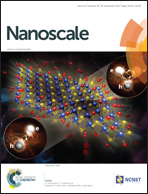Carbohydrate-based amphiphilic nano delivery systems for cancer therapy
Abstract
Nanoparticles (NPs) are novel drug delivery systems that have been attracting more and more attention in recent years, and have been used for the treatment of cancer, infection, inflammation and other diseases. Among the numerous classes of materials employed for constructing NPs, organic polymers are outstanding due to the flexibility of design and synthesis and the ease of modification and functionalization. In particular, NP based amphiphilic polymers make a great contribution to the delivery of poorly-water soluble drugs. For example, natural, biocompatible and biodegradable products like polysaccharides are widely used as building blocks for the preparation of such drug delivery vehicles. This review will detail carbohydrate based amphiphilic polymeric systems for cancer therapy. Specifically, it focuses on the nature of the polymer employed for the preparation of targeted nanocarriers, the synthetic methods, as well as strategies for the application and evaluation of biological activity. Applications of the amphiphilic polymer systems include drug delivery, gene delivery, photosensitizer delivery, diagnostic imaging and specific ligand-assisted cellular uptake. As a result, a thorough understanding of the relationship between chemical structure and biological properties facilitate the optimal design and rational clinical application of the resulting carbohydrate based nano delivery systems for cancer therapy.


 Please wait while we load your content...
Please wait while we load your content...